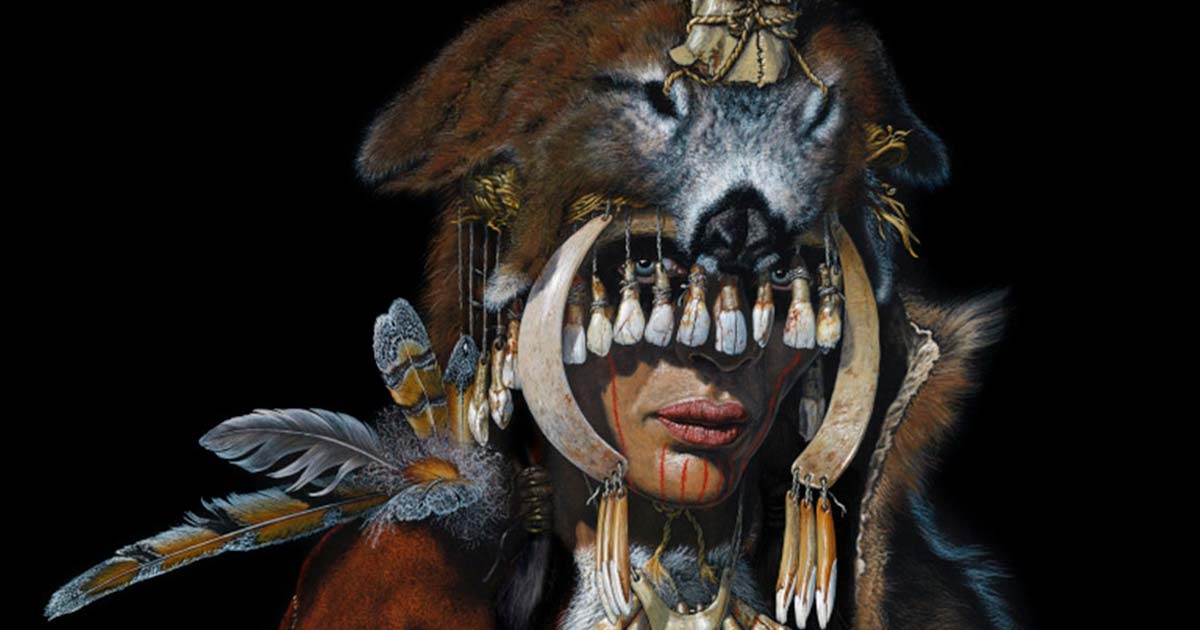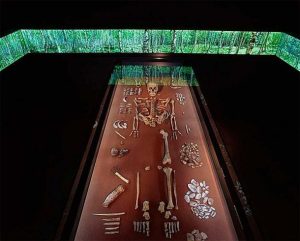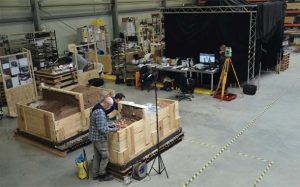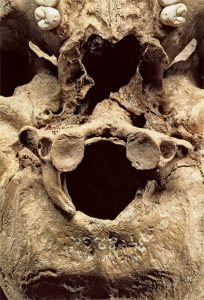Hidden Connection Between 9,000-Year-Old Bad Dürrenberg Shaman and Infant Exposed

Ever since archaeologists discovered the 9,000-year-old remains of what has come to be known as the Bad Dürrenberg shaman in the 1930s, they have been struggling to learn more about this enigmatic figure. The later unearthing of infant remains buried close by, heightened the conundrum. Now, genetic analysis has finally revealed their relationship.
Unearthing the Bad Dürrenberg Shaman
One of the most ancient and remarkable burials ever found in Europe was unearthed by archaeologists digging near the village of Bad Dürrenberg in southern Germany in 1934. In a grave that has since been dated to between 7,000 and 6,800 BC, the excavators found the skeletal remains of an adult human, later revealed to have been a woman.
The unusual and extensive collection of grave goods buried alongside her showed that she must have been some type of shaman, someone who traveled to alternate dimensions of reality in search of sacred knowledge and spiritual contact. In a subsequent excavation, researchers also found the remains of an infant, close enough to the woman to suggest some type of relationship between the two bodies.
Until now no one was certain what the relationship between the shaman and the infant might have been. But a recently completed genetic study confirmed that they were in fact related by blood. The connection was not as close as expected, however: the infant boy was not the woman’s child, or even grandchild, but rather a fourth- or fifth-degree relation. Assuming a direct line of descent, the woman could have been the boy’s double great- or triple-great grandmother.
Since the woman was under the age of 40 when she died, it would seem the infant lived and was buried more than a century later, next to a venerated ancestor rather than near someone who knew of him directly.

The Bad Dürrenberg shaman in the State Museum of Prehistory Halle (Saale). (Juraj Lipták / State Office for Heritage Management and Archaeology Saxony-Anhalt)
Keeping the Family of the Bad Dürrenberg Shaman Together, Forever
The woman’s remains were discovered accidently, during a construction project at the renowned Bad Dürrenberg’s spa gardens. The picturesque village in the southern German state of Saxony-Anhalt has long been a popular tourist attraction. The recovery of the historically significant burial of the Bad Dürrenberg shaman only increased the mystique associated with it.
The woman was found in a seated position, surrounded by a diverse collection of burial items. These included tools and decorative artifacts made from bone, antlers, flint and other types of stones. Amongst the hoard there was also a piece of red ochre that would have been used for painting or drawing.
The animal remains included the shells of three turtles, several partially pierced teeth from unknown animals, deer antlers and six partly pierced boar tusks. All of these animal remains discovered alongside the Bad Dürrenberg shaman were consistent with what has been found at other burials associated with ancient European shamans.
When the infant was unearthed during re-excavations at the burial site, it was suspected he might have been the woman’s son. But the new genetic study, which has just been published as part of a conference meeting summary by Propylaeum-eBOOKs, shows that their relationship was much more distant than that.
High-quality genetic samples were obtained from both skeletons. The German researchers used a newly developed method for data scanning that detects what are known as identity-by-descent tracts. These are sections of a genome that can reveal commonalities between related individuals. In this case, the number of shared tracts or sections was consistent with a fourth- or fifth-generation separation. This would mean the shaman and the infant lived more than a century apart, yet there is no doubt they were family.

Two blocks containing the remains of the burial pit of the Bad Dürrenberg shamand during research. (State Office for Heritage Management and Archaeology Saxony-Anhalt / CC BY-NC-ND 4.0 DEED)
Who Was the Female Bad Dürrenberg Shaman?
In addition to establishing this relationship, the new genetic study also revealed a wealth of details about the Bad Dürrenberg shaman. The Mesolithic period female shaman would have been older than 30 but younger than 40. She would have been 5’1” (155 centimeters) tall, and would have had relatively dark skin, dark, straight hair and blue eyes.
Her skeleton was missing certain muscle attachments that were common in hunter-gatherer people in the Mesolithic period. This suggests she didn’t participate in many of the activities normally associated with that lifestyle (this might be expected if her duties were exclusively those associated with shamanism).
Curiously, at the base of her skull the woman had an anomaly that suggested she’d suffered from an abnormally developed blood vessel in the adjacent area. According to the researchers, if she’d assumed a certain head position it could have triggered involuntary twitching or fluttering of the eyeballs, caused by the pinching off of the irregular blood vessel when her head and neck were oriented in this way. This unusual physical manifestation may have convinced others that she possessed some type of second sight or inner vision, establishing her qualifications for shamanistic explorations of hidden realms.
Taken as a whole, the woman’s genetic profile is well within the range of normal for someone living in a hunter-gatherer society in Central or Western Europe 9,000 years ago. At this point the geneticists don’t know nearly as much about the infant, but subsequent examinations of his genetic data could reveal fascinating details about his short life and tragic premature death.

Additional research of the Bad Dürrenberg shaman revealed that the base of her skull had an anomaly which would have caused triggered involuntary twitching. (State Office for Heritage Management and Archaeology Saxony-Anhalt / CC BY-NC-ND 4.0 DEED)
2024 Exhibition Featuring the Bad Dürrenberg Shaman and the Infant
The State Office for Heritage Management and Archaeology of Saxony-Anhalt is currently in possession of the skeletons of the Bad Dürrenberg shaman and the infant. They are not on display at the moment, but will be re-introduced to the public in a new exhibition opening at the State Museum of Prehistory in Saxony-Anhalt in March 2024.
This exhibition will include fresh finds from recent excavations in Bad Dürrenberg. These digs have recovered more lithic artifacts, pierced animal teeth and other animal remains, as well as a mixture of human bones from other individuals who were buried near the shaman and the infant.